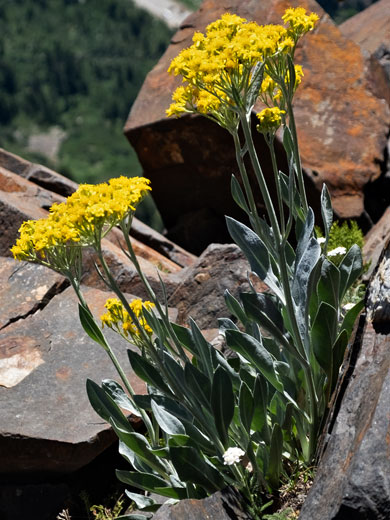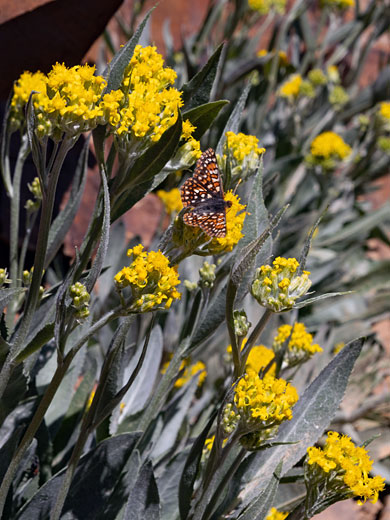Common name:
Woolly groundsel
Family:
Scientific name:
Packera cana
Main flower color:
Range:
The northern Great Plains, the Rocky Mountain states, and states to the west, except Arizona
Height:
Up to 12 inches
Habitat:
Rocky crevices and slopes, sagebrush plains, grassland; up to 12,500 feet
Leaves:
Blades are round, ovate to widely lanceolate, up to 2 inches long and 1.2 inches wide. Basal leaves are long-stalked, cauline leaves sessile
Season:
June to August
Identifying features of packera cana include the unlobed, hairy, ovate leaves, the yellow ray florets and the whitish (canescent) hairs on the leaves, from sparse to dense. This species is largely found in mountainous areas of the West, and is most common in the Sierra Nevada and the Rocky Mountains of Wyoming and Colorado, though it also occurs in coastal regions, in Oregon and Washington.
Plants produce one stem, with leaves at the base (mostly), and a little way above. Leaf margins are usually flat, and entire, though sometimes wavy and/or shallowly toothed. Flowerheads have both disc and ray florets, respectively 35 to 50 and eight to ten. Phyllaries number 13 or 21, and they have a covering of tomentose hairs. Flowerheads form in a flat-topped cluster, of between eight and 15, or more. The bractlets at the base of the involucre are inconspicuous.
Plants produce one stem, with leaves at the base (mostly), and a little way above. Leaf margins are usually flat, and entire, though sometimes wavy and/or shallowly toothed. Flowerheads have both disc and ray florets, respectively 35 to 50 and eight to ten. Phyllaries number 13 or 21, and they have a covering of tomentose hairs. Flowerheads form in a flat-topped cluster, of between eight and 15, or more. The bractlets at the base of the involucre are inconspicuous.
All Contents © Copyright The American Southwest | Comments and Questions | Contribute | Site Map






